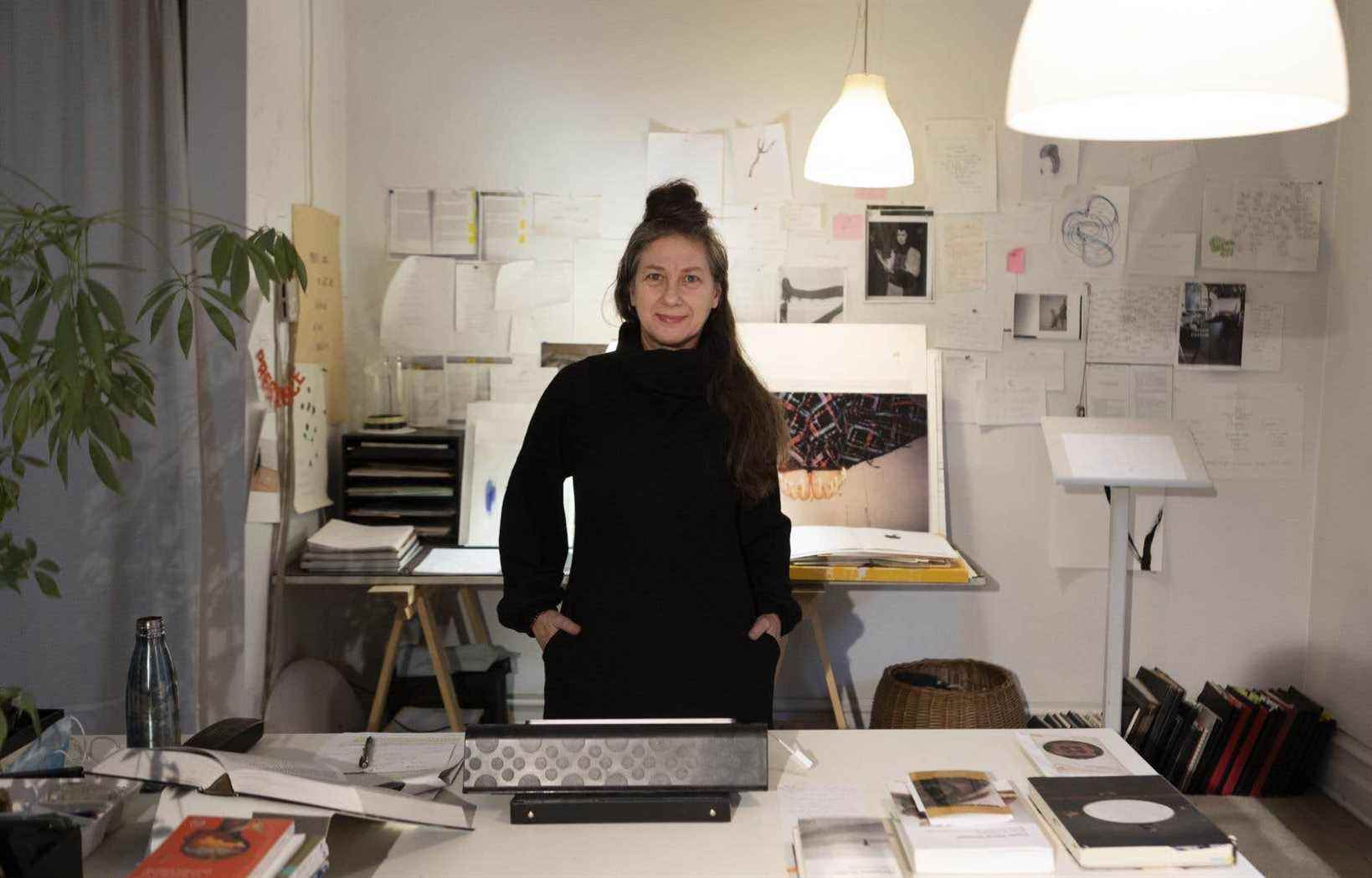While she has been discreet in recent years, artist Sylvie Cotton has returned to the fore this season with three publications. This is the opportunity to meet her, especially since, for having practiced confinement, meditation, and used the word “benevolence” long before the pandemic brought them up to date, she is a inspiring precursor, even a model.
Writing her doctoral thesis in arts studies and practices, among other things, kept her in the background and very busy. For the time being, “the workshop had turned into the doctoral student’s office”, sums up the artist on his side of the screen. Behind her, cardboard and paper in various formats on the walls display words that suggest that, after defending the thesis, study and reflection are still carried out on a daily basis.
The same signs were visible during a face-to-face meeting in the heart of last summer in what, on the second floor of a humble little house in the Hochelaga-Maisonneuve district, has served as his workshop for nearly 20 years. Stacked books, objects installed such as delicate altars and tatami mats organize an environment reminiscent of monastic work, if not of spiritual activities.
“Deep down, I’m not a plastic artist, I am a plasticine,” says the self-taught artist, whose love of words goes back to her studies in literature when she aspired to become a writer. While she touches on drawing, photography and installation, to name only these forms, Cotton, in her multidisciplinarity, gives a large place to writing, handwritten moreover.
Motive, material or motor, the text is at the junction of her practices, for her who is also a cultural worker and art historian. Founder of the Montreal artist-run center Dare-Dare (1985), with whom she maintains professional and emotional ties, she also co-directed The installation. Tracks and territories (Skol, 1997), a work that has become a benchmark in Quebec. The workshop, if it has its physical space, is very much for its intangible, cerebral and spiritual dimension.
Deep down, I’m not a plastic artist, I am a plasticine.
Become one with the other
Moreover, Sylvie Cotton puts a lot of her practice to work far from home, during artist residencies. “It’s when I’m somewhere else that I do things. When I’m invited to go somewhere, that’s where it happens. It’s rare that I bring things, ”says the artist known for her performances and her action art.
In 2001, in Koshoku, she had a Japanese tattoo on her back “My body, my studio”, a credo that she has never abandoned. From the following year, relationships with others, with otherness, also guide their actions. Since then, she has multiplied the protocols of meetings, often with strangers, for varying durations, sometimes repeated giving rise to co-created works, ” With the other », To use the title of one of his books (Sagamie / 3e Impérial, 2018).
It’s when I’m somewhere else that I do things. When I’m invited to go somewhere, that’s where it happens. It’s rare that I bring things.
Inventories of people met, trips taken in pairs, portraits based on moles or the lines of the hands of volunteers offering the vulnerability of their bodies have thus emerged. Her niche is that, less on the lips today, of relational aesthetics, and the French Sophie Calle could be her artistic big sister.
If she says she practices her art ” in situ , “She does it deeply” in spirit ”, An approach she owes to the meditation that has underpinned her trajectory for 20 years. She was drawn to Buddhist teachings, not to monastic life, “but to nourish lay life, everyone’s life, everyday life with its difficulties”.
“Meditation,” she explains, “brings us to meet ourselves. By putting the focus of attention on a daily basis, we begin to see things differently, more directly. It affects relationships, work. It touches everything. When we meditate, we meet our imaginative spirit. “
Hence the notion of “interior workshop” which has made its place at the heart of his works, in a convincing way, as in Make time (2008) at the Musée national des beaux-arts du Québec. In this installation-performance, she took up residence in one of the cells of the old prison. Over the course of the exercise, physical seclusion symbolized the quest to free the mind, by paying attention to the body. By appointment, members of the public could integrate the intimacy of the process, creating with her drawings “wet” or “breathed” according to an economy regulated on the interweaving of art and life.
The foundation
Depending on the forced confinements that currently imprison us, this example is another cause for reflection. Sylvie Cotton seems to have a head start on us in this area. ” [Méditer], it is also seeing all the tools that I have inside to bring me back, to relax, to have confidence, to connect ”, explains the one who, in her doctorate, positions with a Buddhist ontology the phenomenon of presence in his artistic practice.
The fact remains that she admits being crossed by doubts and fears. It is about welcoming them, advice that she lavishes on herself and on the others to whom she teaches during workshops, in great demand since the pandemic. In particular, she shares with her collective Les Assises, a group of women artists who have gathered around meditation for eight years, “an incredible sorority space”.
Together they read Buddha Mind in Contemporary Art (University of California, 2004) and they plan to exhibit under the name Les Assises Standing. “What happens when we leave the cushion [de méditation], are there traces of that [dans les œuvres] ? »Wonders the artist who, while the year ends not without a stir, glimpses with serenity various plans for 2022. It is perhaps because above all, Sylvie Cotton, luminous, lives in the present.
